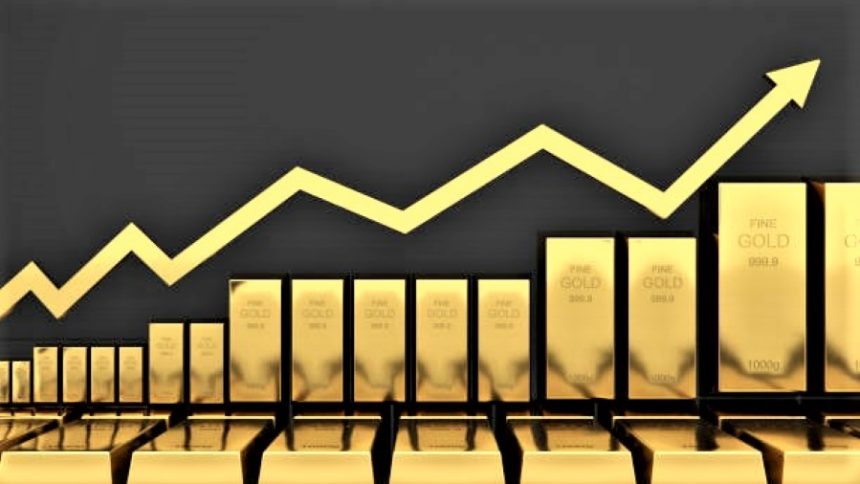Geopolitical Escalation Lends Support to Gold’s Safe-Haven Status
Gold (XAUUSD) prices are holding steady near their highest levels since April 22, buoyed by heightened geopolitical uncertainty in the Middle East and market expectations of a dovish pivot from the Federal Reserve. Despite some intraday selling pressure during the Asian session on Monday, gold remains underpinned by a combination of factors that continue to drive safe-haven demand.
The key geopolitical catalyst remains the rapidly intensifying conflict between Israel and Iran. Over the weekend, Iran launched a new wave of missile and drone attacks on Israeli targets, prompting a fresh round of Israeli retaliatory strikes on Iranian military infrastructure. This ongoing escalation is keeping risk appetite in check and driving investors toward safe-haven assets like gold.
Even though the broader equity markets in Asia reflected a relatively upbeat tone—suggesting that market participants have, so far, largely discounted the risks of full-blown regional war—gold still managed to maintain its ground, underlining the underlying support stemming from global uncertainty.
Trade Policy Uncertainty Under Trump Also Adds to Bullish Gold Bias
Adding another layer of uncertainty is the return of concerns about the direction of U.S. trade policy under President Donald Trump. Markets remain on edge over potentially disruptive trade strategies, including tariffs or protectionist measures, which could spark new trade tensions globally. Such fears act as an additional tailwind for gold, as investors look to hedge against macroeconomic instability.
Historically, gold has thrived in environments characterized by trade wars, supply chain disruptions, and weakening global trade flows. A revival of protectionist rhetoric from the White House is likely to encourage longer-term gold accumulation, particularly by institutional investors and central banks.
Fed Policy Outlook in Focus Ahead of Key FOMC Decision
While geopolitical risks provide the broader backdrop, investor attention is now squarely on this week’s Federal Reserve policy meeting. The two-day FOMC event, concluding on Wednesday, is expected to offer fresh clues about the central bank’s policy stance amid signs of moderating inflation and cooling economic activity.
Markets are pricing in a high likelihood that the Fed will keep interest rates unchanged at this meeting. However, traders are increasingly anticipating a dovish shift in the Fed’s forward guidance. Any acknowledgment of softer inflation or concerns about economic slowdown could reinforce expectations of rate cuts later this year—a scenario that would be highly bullish for gold.
Gold, being a non-yielding asset, tends to benefit when interest rates fall, as the opportunity cost of holding the metal diminishes. If the Fed’s tone reflects a willingness to ease policy sooner than previously expected, gold could push decisively higher in the coming sessions.
US Dollar Strength Acts as Temporary Headwind
Despite the broader bullish setup for gold, recent gains in the US Dollar are acting as a modest headwind. After hitting a three-year low last Friday, the USD has shown signs of recovery, supported by short-term profit-taking and cautious sentiment ahead of the FOMC.
A stronger dollar typically makes gold more expensive for holders of other currencies, which can limit the metal’s upside. However, analysts note that the greenback’s recovery is likely to remain capped unless the Fed signals a more hawkish outlook than expected—a scenario that appears increasingly unlikely given recent macroeconomic data.
Thus, while the USD rebound may slow gold’s momentum temporarily, it is unlikely to trigger a deep correction in prices unless backed by a meaningful shift in interest rate expectations.
Equity Market Optimism Limits Immediate Gold Upside
Another factor keeping gold from surging further is the broadly positive sentiment in global equity markets, particularly in Asia. Risk assets have remained surprisingly resilient despite the worsening situation in the Middle East, suggesting that investors are maintaining a degree of optimism about the global economy and corporate earnings.
This optimism has translated into some risk-on flows, limiting demand for safe havens like gold. However, this dynamic could quickly reverse if geopolitical tensions intensify or if Fed commentary undermines confidence in the economic recovery.
Given the fragile macro landscape, many investors are likely to continue holding onto their gold positions as a form of insurance against rising volatility.
Technical Outlook: Gold Bulls Maintain Control, but Watch FOMC for Next Move
From a technical perspective, gold remains well-supported above key levels, with buyers successfully defending the $2,320–$2,340 zone on intraday pullbacks. The metal touched its highest level in nearly two months during the Asian session before encountering minor resistance, suggesting that bullish momentum remains intact but cautious.
The Relative Strength Index (RSI) on the daily chart is approaching overbought territory, indicating the potential for short-term consolidation. However, any meaningful dip is likely to be seen as a buying opportunity, especially if the Fed signals dovish intent or geopolitical risks escalate further.
Traders will be closely watching whether gold can break decisively above $2,360—a level that could open the door for a retest of April’s high near $2,400.
Gold Fundamental Landscape: Risk Bias Skewed Toward Further Gains
The underlying macro drivers for gold remain clearly tilted in favor of the bulls. Key supporting factors include:
- Elevated geopolitical tensions in the Middle East, particularly between Israel and Iran.
- Trade policy uncertainty under Trump’s administration.
- Expectation of Fed rate cuts amid disinflation and economic slowdown.
- Volatile equity markets and fragile investor sentiment.
- Central bank gold buying, particularly by emerging economies.
Unless there is a significant de-escalation in the Middle East or a hawkish surprise from the Fed, gold is likely to remain well bid in the short to medium term.
Key Takeaways
- Gold prices are consolidating near their highest level since April 22, supported by geopolitical tensions and dovish Fed expectations.
- The conflict between Israel and Iran, alongside Trump’s unpredictable trade policies, has reinforced safe-haven demand.
- A modest rebound in the US Dollar and positive equity sentiment are capping further gains in the near term.
- All eyes now turn to the Federal Reserve’s policy announcement on Wednesday, which could define the next leg of gold’s movement.
- The technical setup remains bullish, with any dips likely to attract strong buying interest.
[faq-schema id=”39909″]









